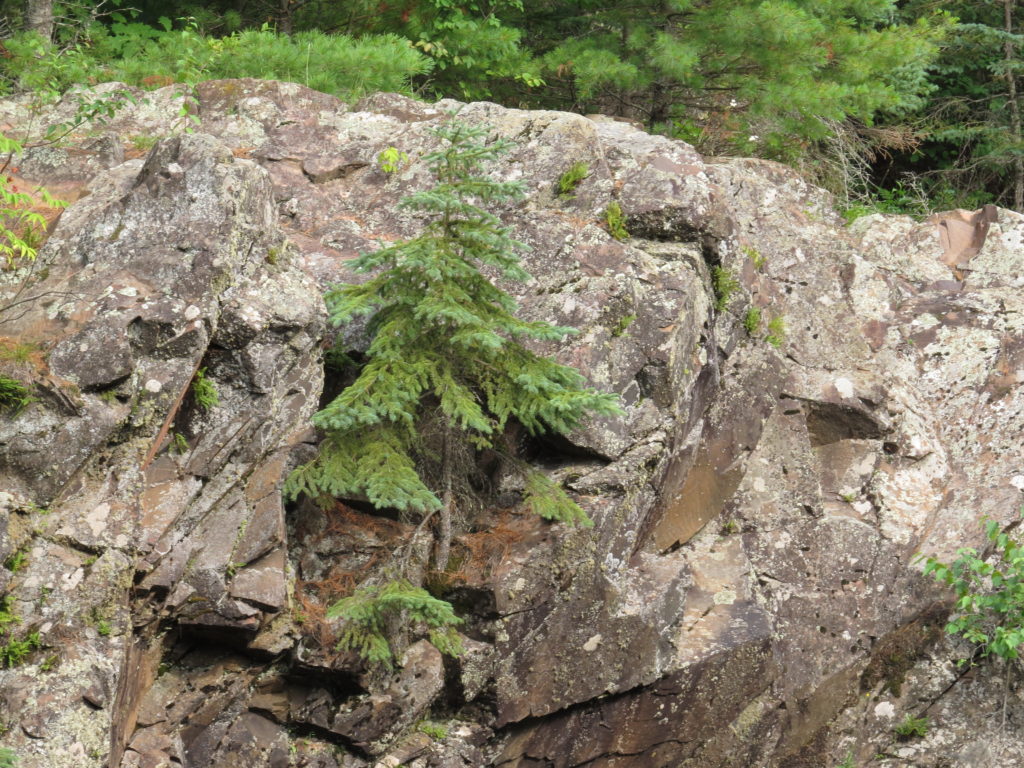A week ago Thursday we loaded the van and were on the road at the respectable leaving time of 5:30 a.m. Chris was ready before that, and despite the fact I had hardly slept a wink that night, I was still the one who ‘held us up,’ so to speak. We headed south to Missouri on I-35, this time for Chris’ brother’s memorial service. With wrecked hearts we drove much of the time in silence—Chris glad to skirt most of the rush-hour traffic in the Cities, me trying to catch up on a few hours of sleep. We were close to the Missouri border in Iowa when I woke up because we were stopping, right on the Interstate behind a long line of cars and trucks already stopped. Not creeping, not stop and go, but stopped. We idled for awhile, then longer, but when truckers began to get out of their trucks to stretch their legs, we turned off the car and opened the windows and then the doors. Two massive semi tow trucks passed us on the right shoulder—it must be a huge wreck. We waited for over an hour. A trucker came up to talk to us—he said a semi had jack-knifed to avoid hitting a car, and there were a couple of cars that had gone into the steep ditch. Amazingly, nobody was hurt. He checked to see if we needed water or anything, then went on to talk to others. When we finally got going, we slowly drove by the wrecked tractor-trailer, saw the driver securing things as it lay on the tow truck, saw the huge ruts in the median where he had reined that big beast of a semi to a skidding, sliding stop, saw the police cars, etc. We wanted to see what had disrupted a major highway and so many people’s lives for that ‘long’ of time.
But there are times when we don’t want to see the wreckage.
On our trip to Lake Superior and then Wisconsin in early August, we planned to stop at Pattison State Park, just south of Superior, to see Wisconsin’s highest waterfall. The Black River begins at Black Lake, 22 miles southwest of the park. It drops 31 feet over Little Manitou Falls at the south end of Pattison.
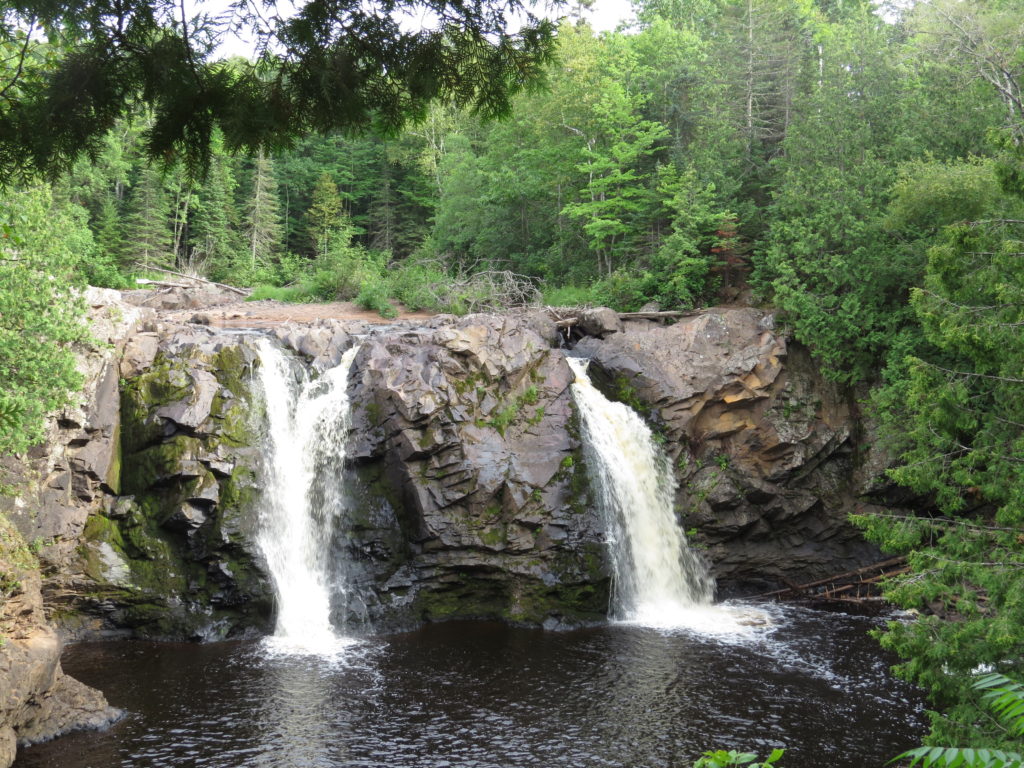
It winds its way into Interfalls Lake with its necklace of Cattails and Swamp Milkweed.
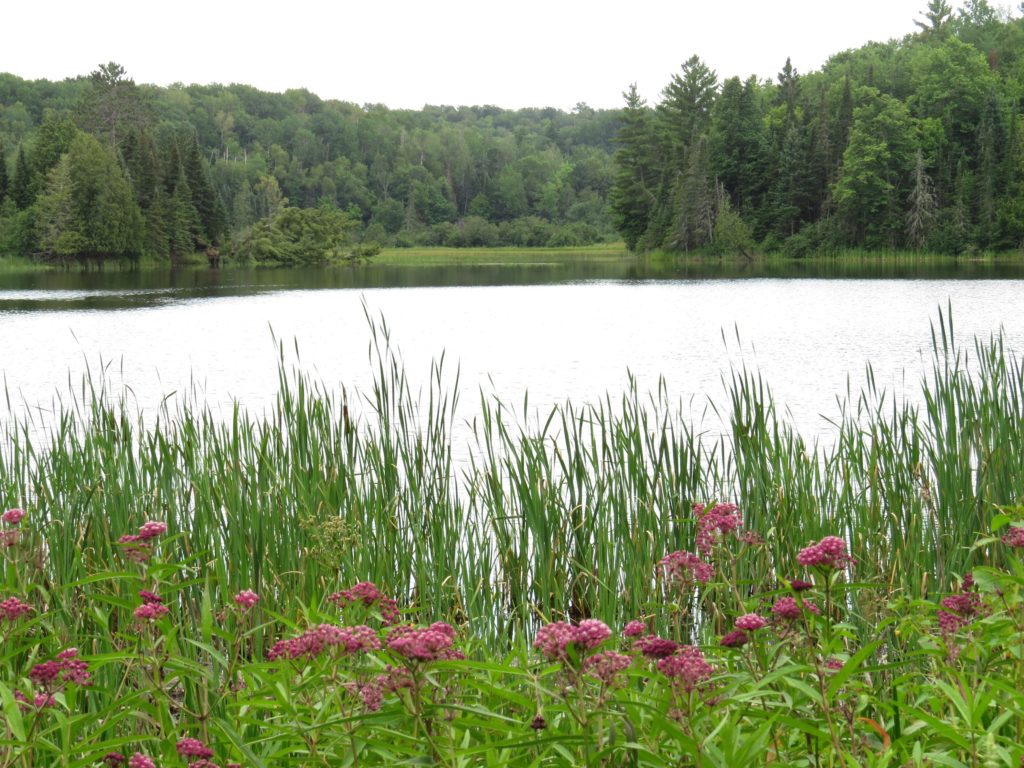
From the lake, the River flowed through a spillway under the highway; we walked from the welcome center, past the old CCC buildings, and through a tunnel that also went under the highway. The park worker told us that hiking trails around the lake and to Little Manitou Falls were closed due to severe storm damage and flooding over the summer of 2018. Large swaths of the park were wrecked from the storms of over a year ago. Some cleaning up and re-building had begun, but the damage was everywhere. Orange caution-fencing roped off areas that were too dangerous to navigate. Large chunks of macadam from the washed-away highway and trail were scattered all over at the topside of the falls. Water had gouged away the soil and plants from the side of the tunnel, the spillway, and the River. Exposed tree roots, like ghost towns, reminded us of what once was. I didn’t want to look at the wreckage; I wanted to see the beautiful falls. So I tried to ignore the wreckage, even as I stepped over it. My camera was pointed only at beauty.
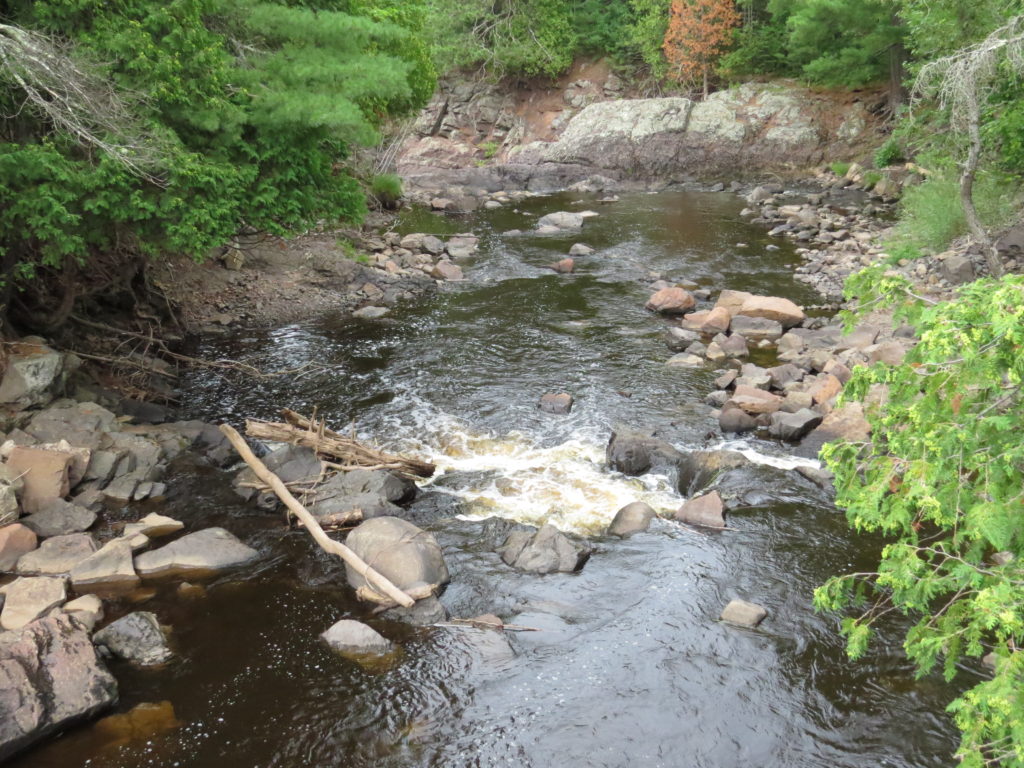
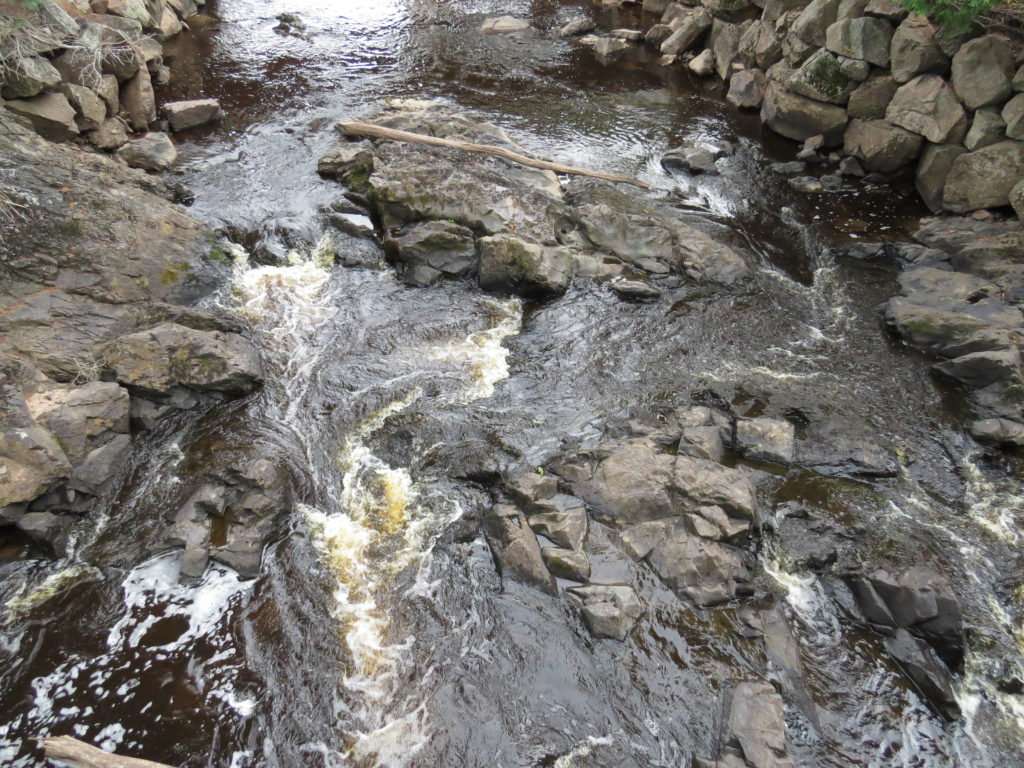
We took a short trail through tall evergreens to the fenced-off precipice. The falls were nowhere in sight, but a little Fir tree with its candle cones caught my eye. The cones were adorned with dripping, hardened sap, lighting up the cloak of greenery around it.
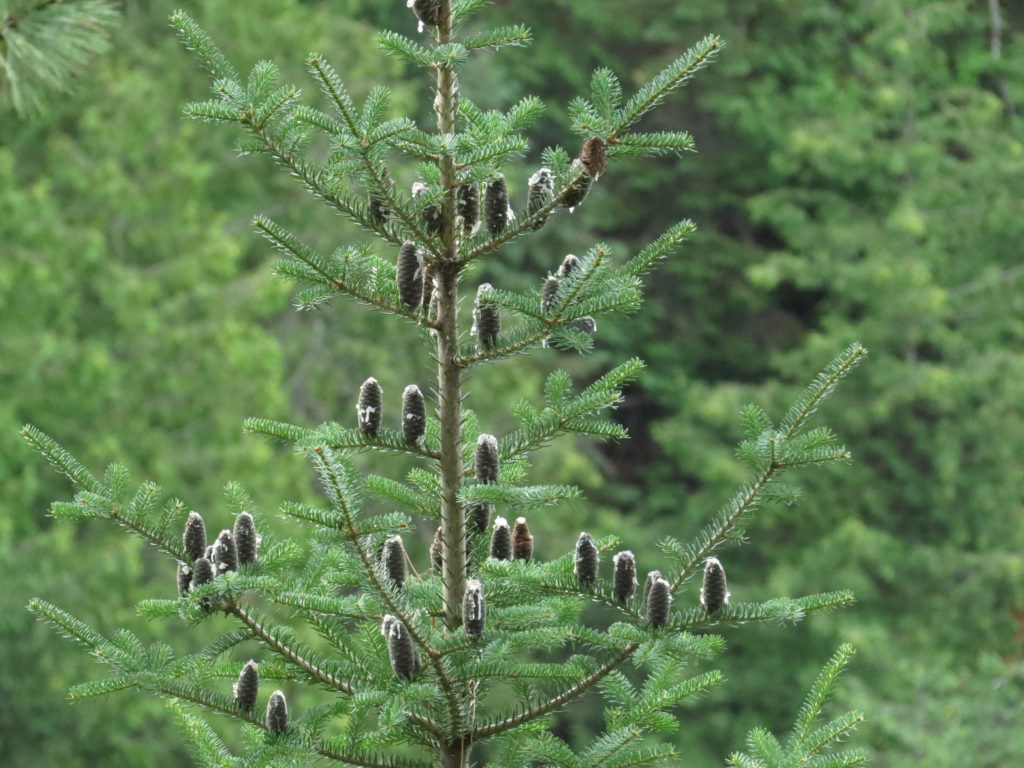
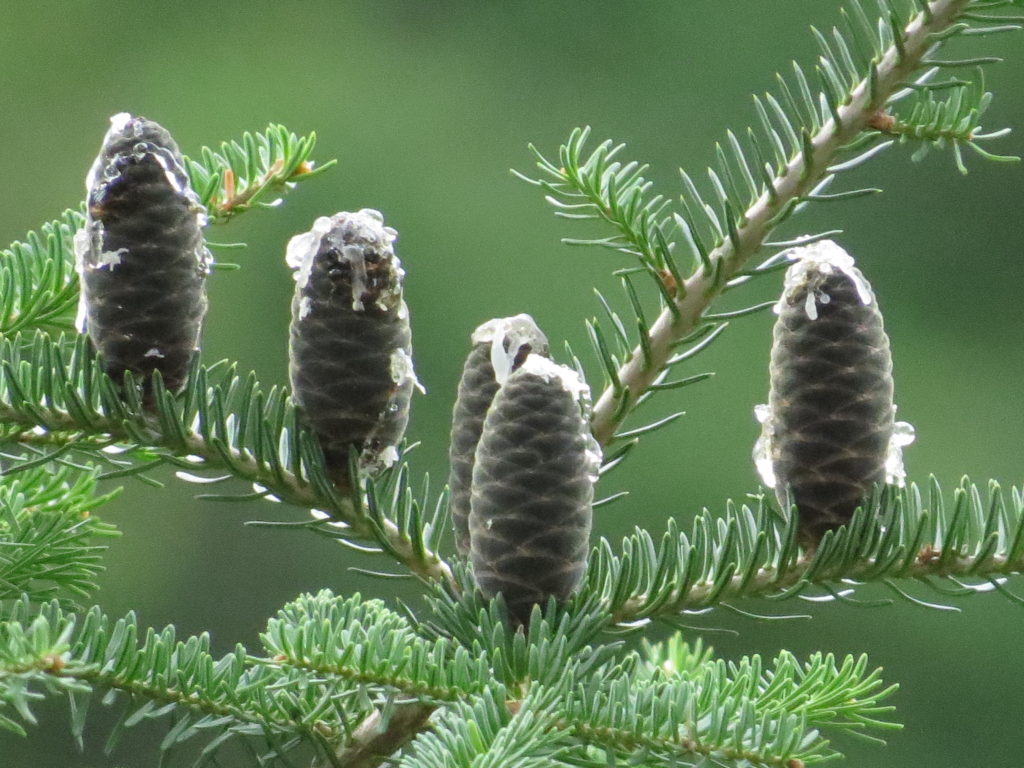
We backtracked to the other side of the River where another short trail led us down to a wooden platform that hung over the rocks to view the white-water River.
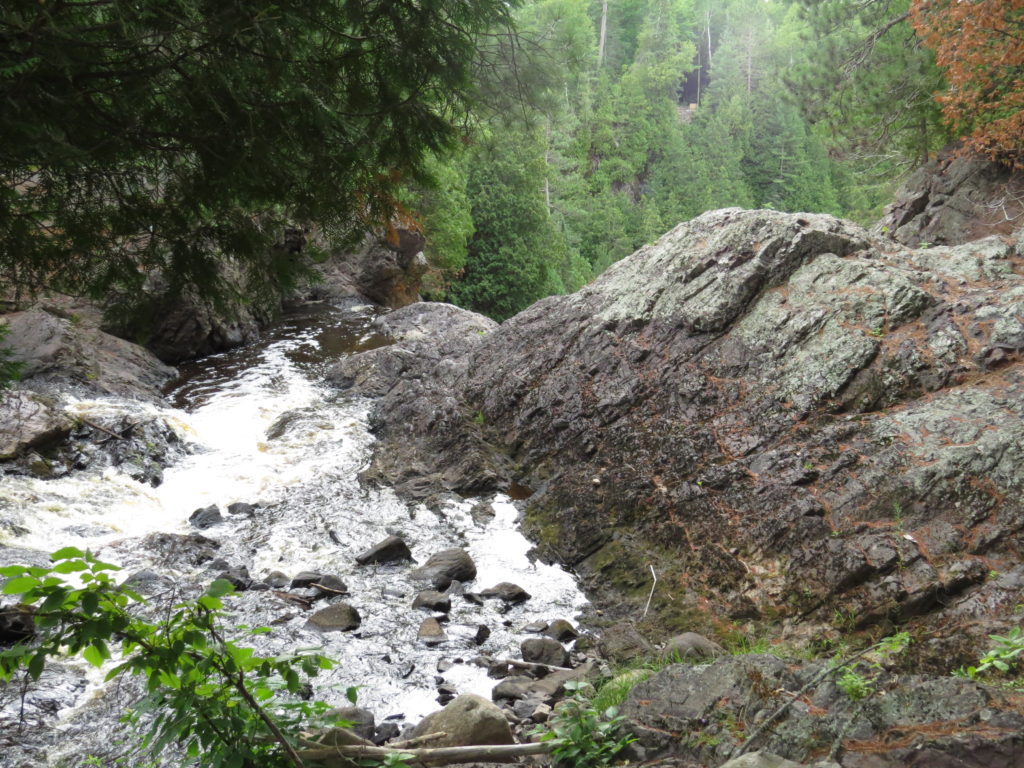
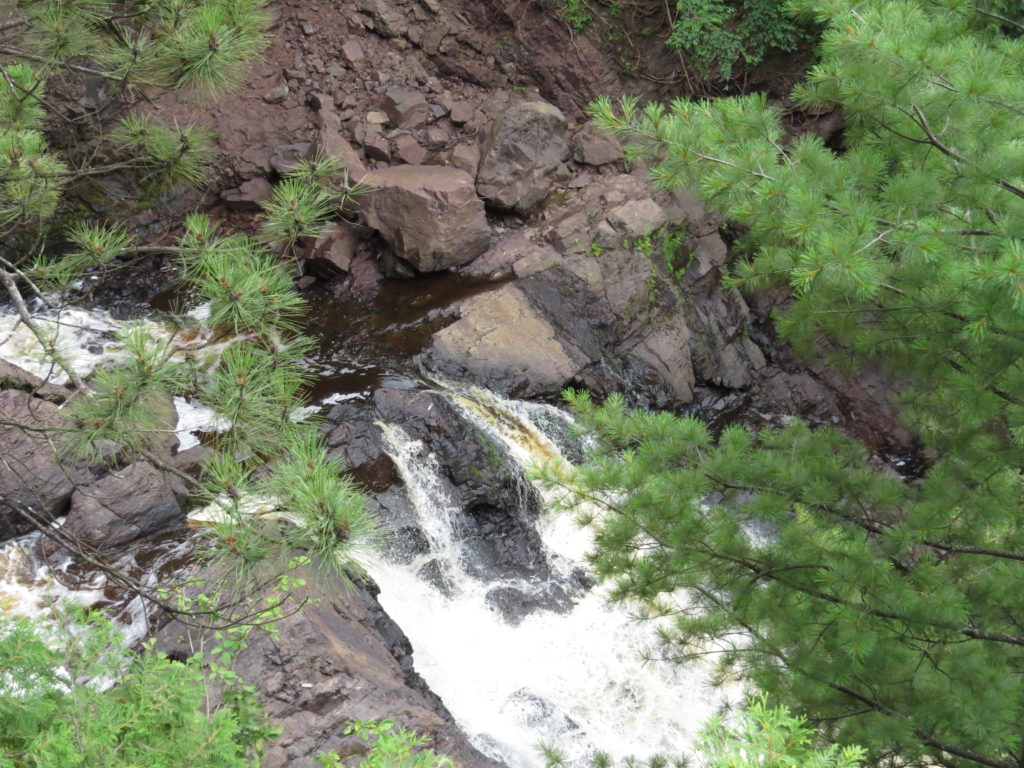
At one point the water disappeared into the dark, basalt rock, the ancient lava swallowing the brown, tannin-rich water. We walked down to a second platform and finally saw the full glory of Big Manitou Falls!
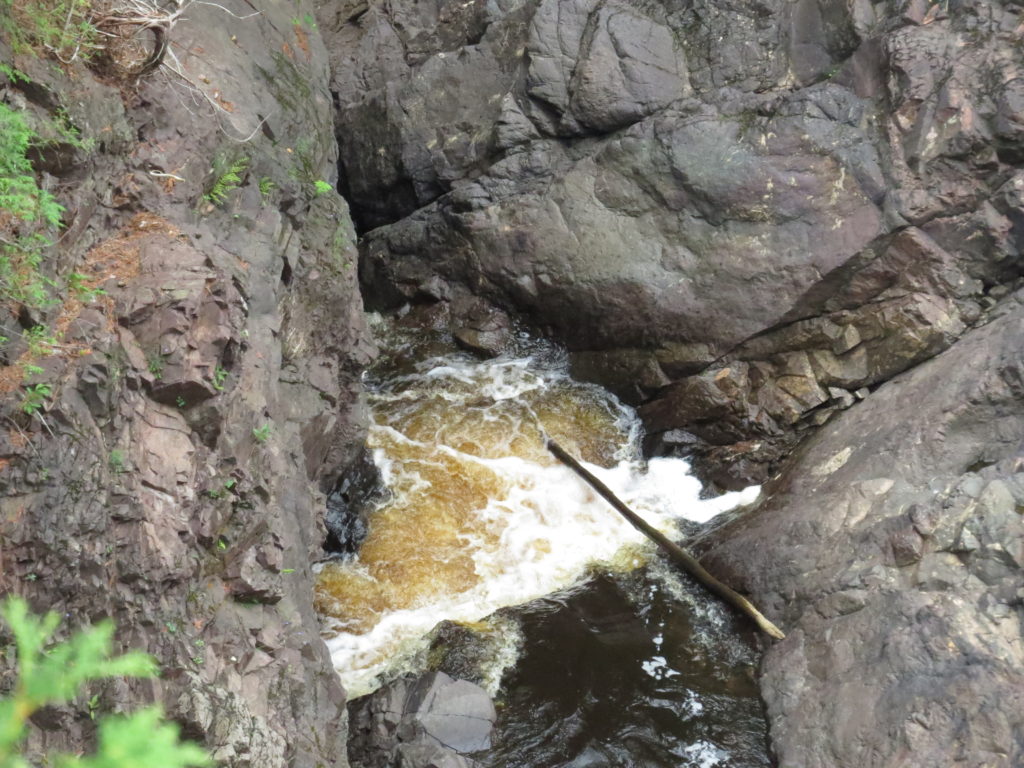
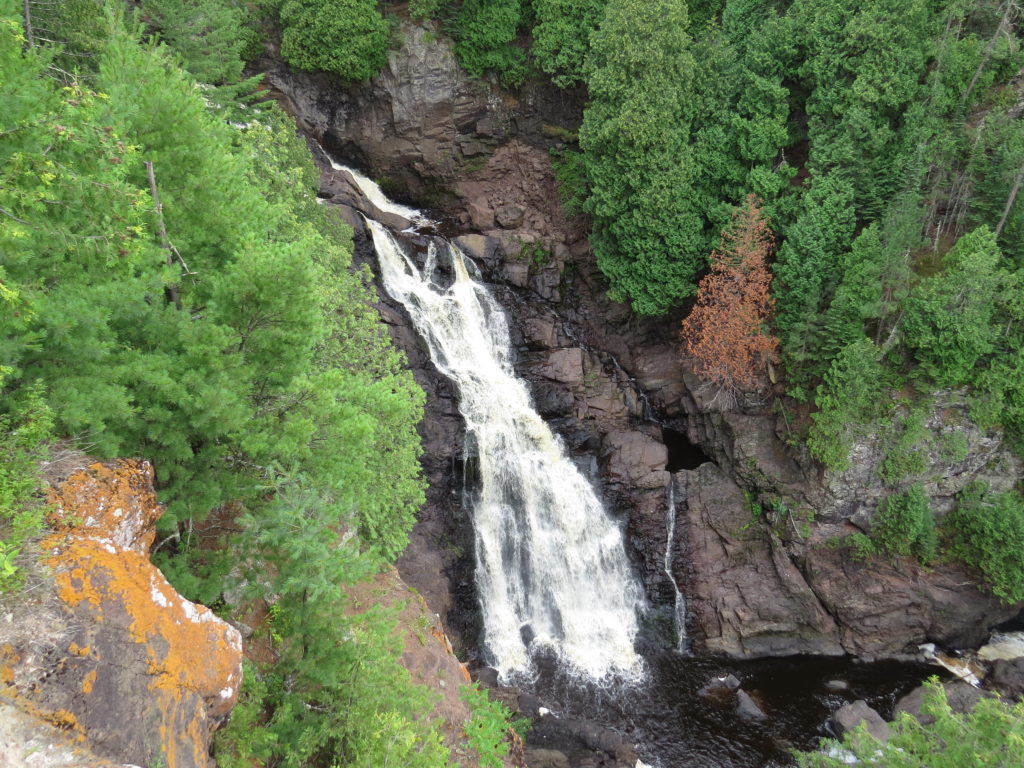
The hard igneous rock contained the powerful water that had wreaked havoc on the soil, trees, and highway above it.
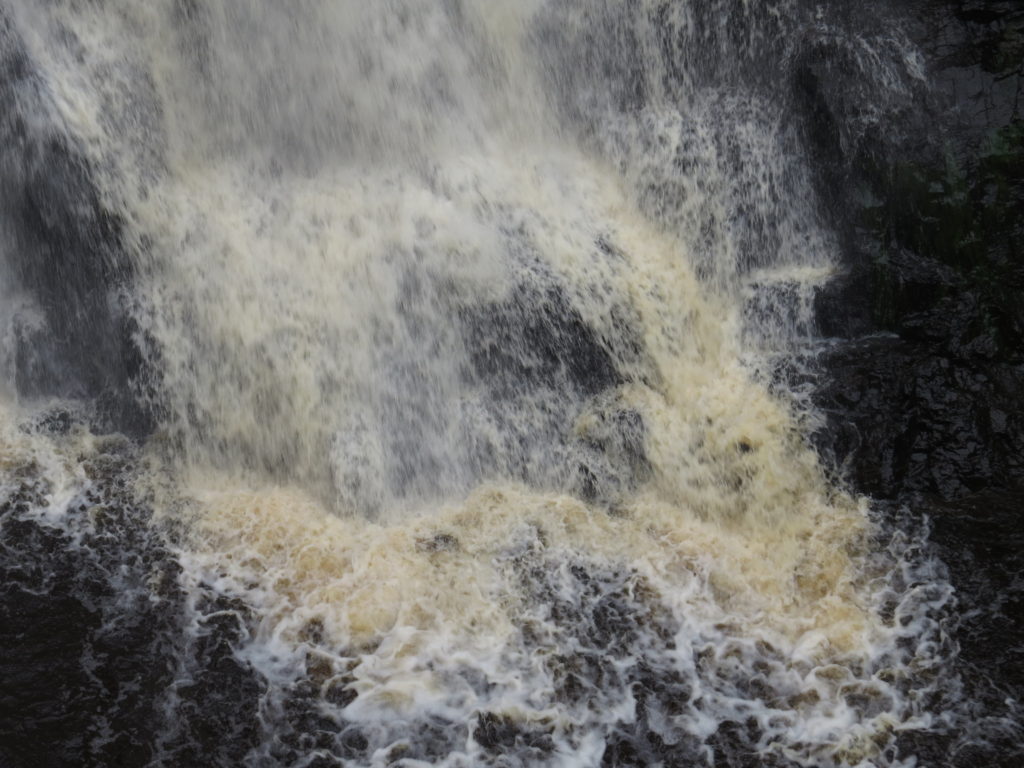
The Black River slowed and calmed as it wound its way through the bottom of the amazing gorge to meet up with the Nemadji River for their final leg of northern travel to the great Lake Superior.
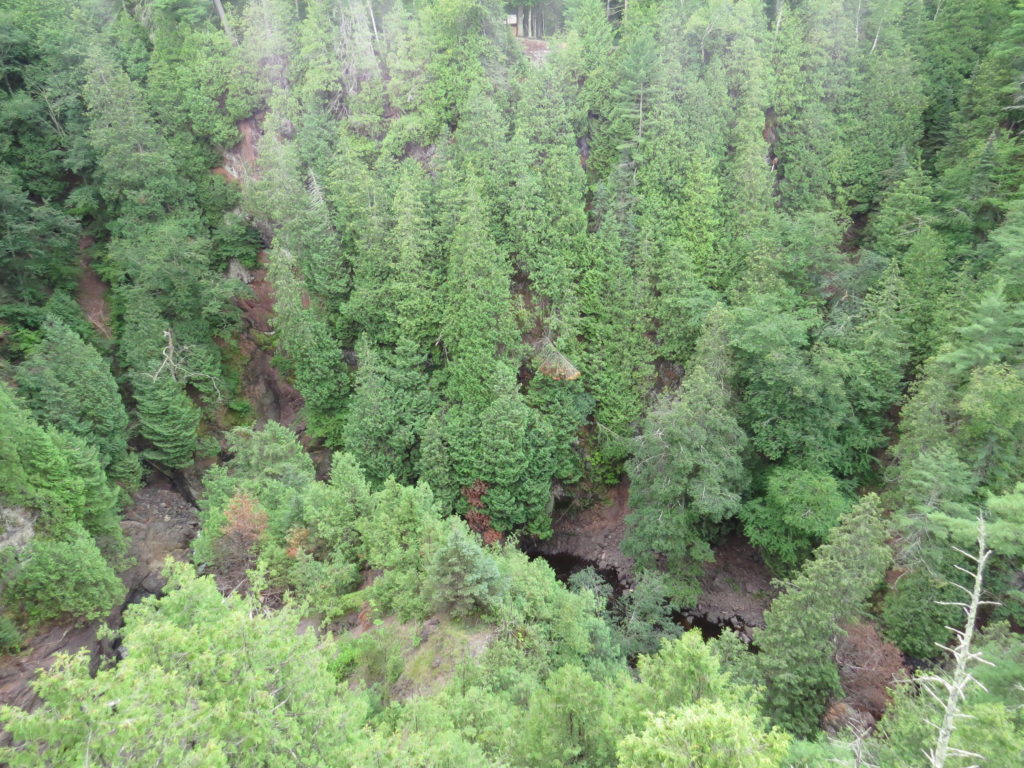
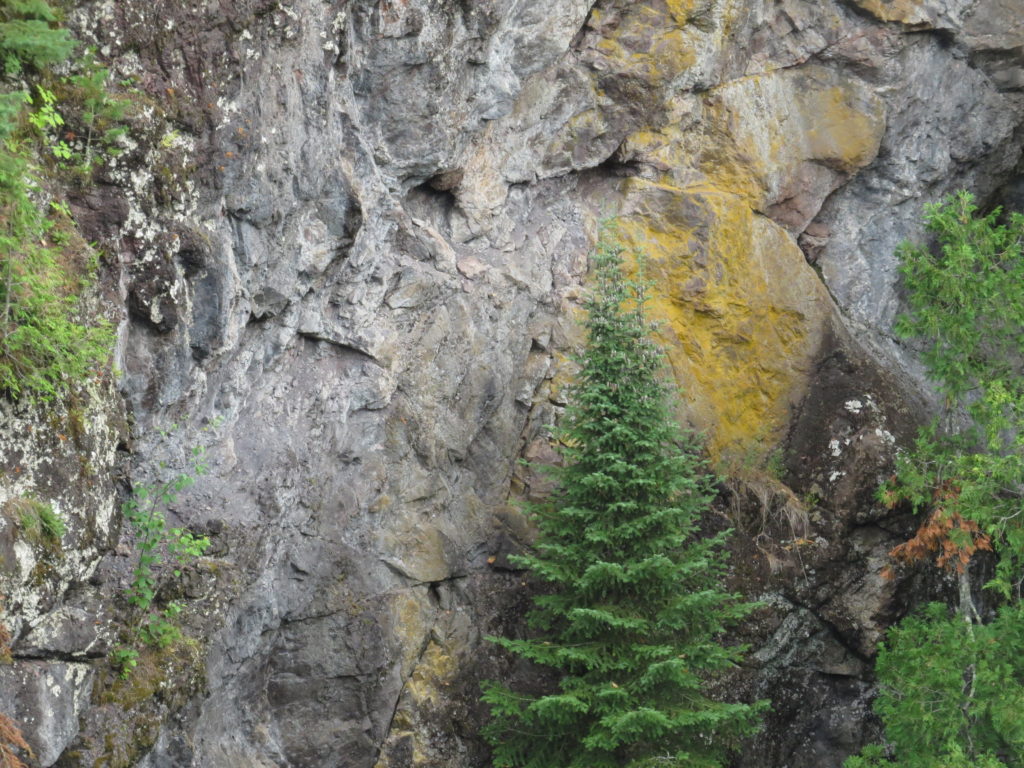
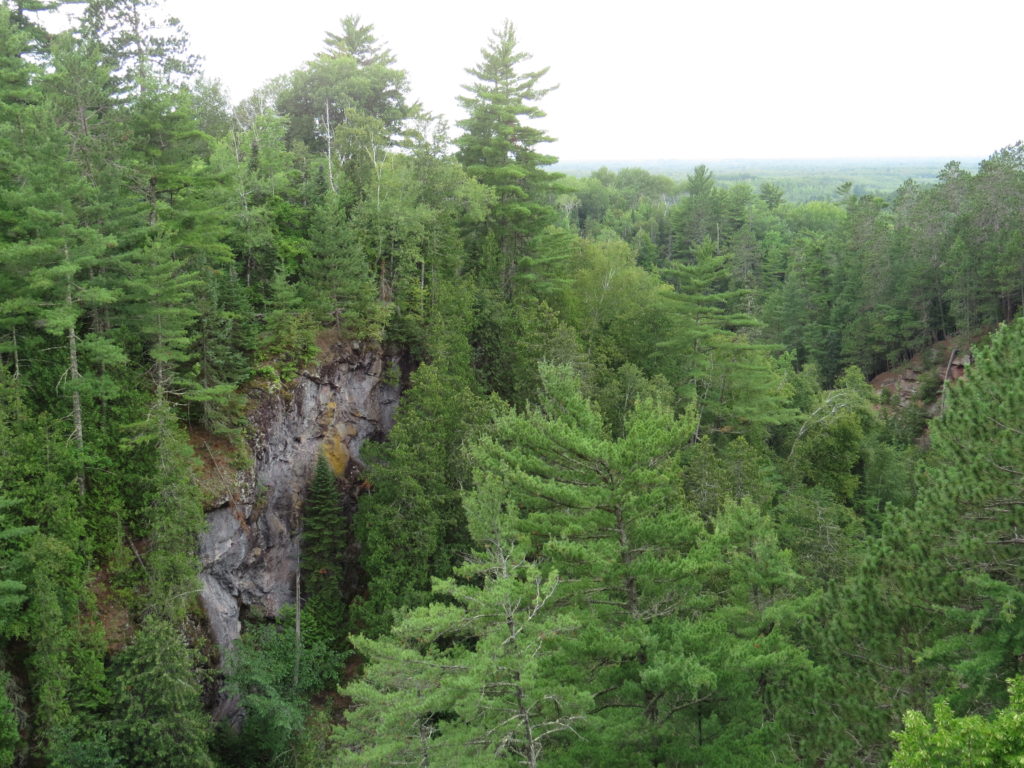
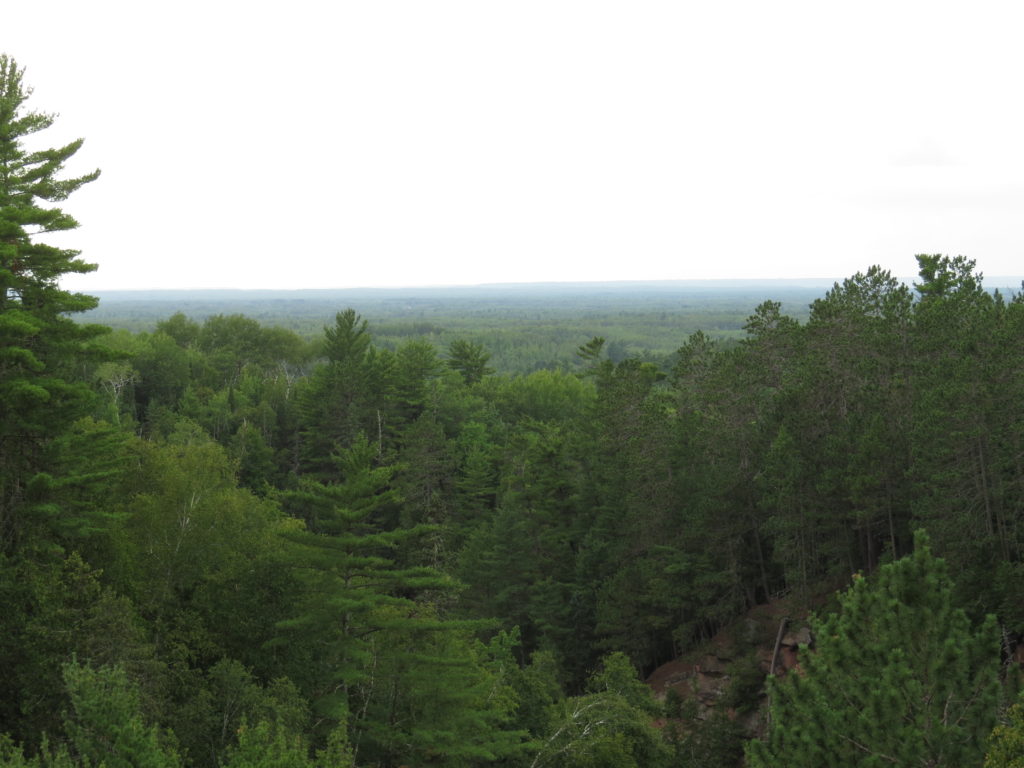
So what does one do in the midst of wreckage, whether of heart, health, or home? In the face of overwhelming rubble, I cry. We are built that way; our physiology uses tears to reduce stress and process emotions. Often we need silence and contemplation after the chaos of wreckage in order to work through the myriad of feelings and oftentimes skewed thoughts that our brain’s negativity bias wrongly confirms. Cleaning up after the wreckage takes time. Sometimes a long time. We need to allow the process to unfold, not force it—it’s like sleep, in that way. As much as we want to sleep at times of unrest, we cannot force it to happen, but we can do things to allow it. In the midst of wreckage, I, like this Mourning Cloak Butterfly, feel the need to hide, to camouflage my wounded self, to remain roped off from the precipice that seems too dangerous to navigate. My emotions and body feel raw and exposed at the loss of what once was.
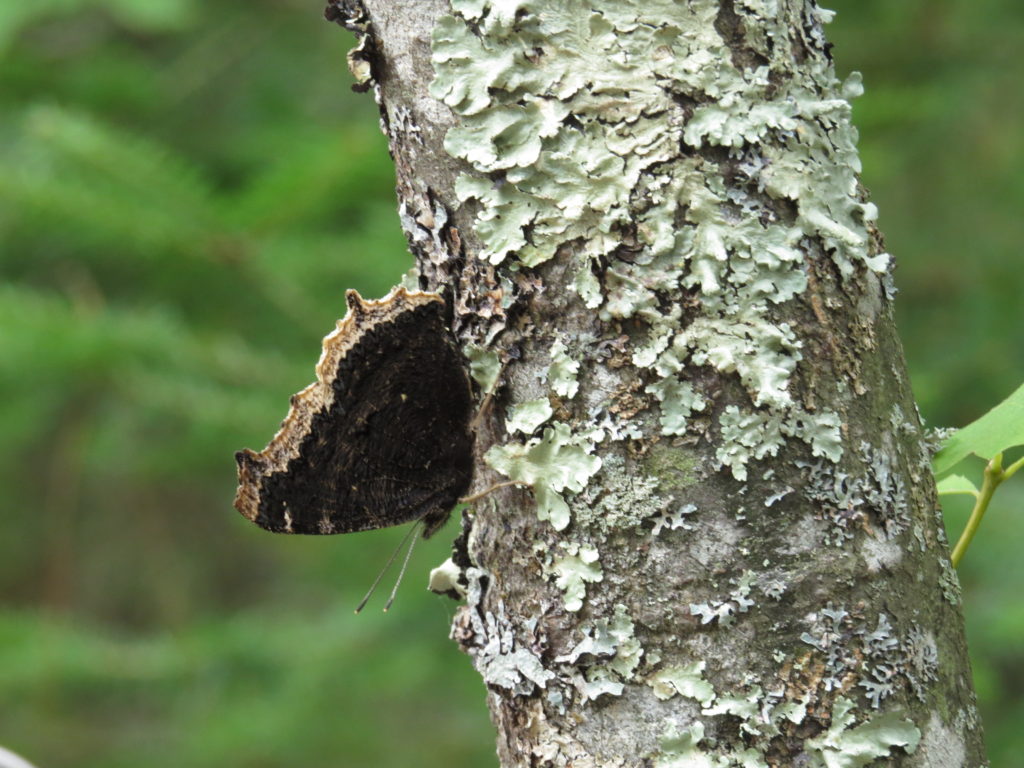
We step into our futures and relationships with good intentions and hope—that is probably not true for all people, but I would hope that for most. We begin with a clean heart and a strong body. Our humanness is like the water of lakes and rivers and falls—it is the wreckage and the beauty of our lives. Love is the rock that contains our humanness. It is what helps us step over the wreckage as we move slowly forward, even when we can’t bear to look. Love is what allows us to finally confront the wreckage and the reasons behind it, when we can. Love is what cares for and sustains the wounded and dying in the midst of heartbreak and grace. Love is what gives us the strength to get up in front of a crowd of people to tell the story of a brother, even as our hearts are wrecked by his death. Love is the light that guides us as we wear the mourning cloak. Love is the foundation for all we have been and for all we are going to be.
